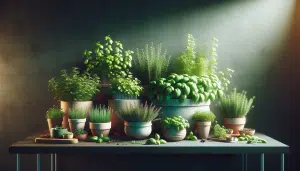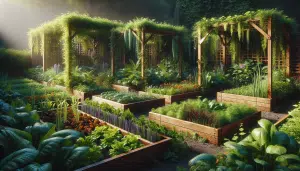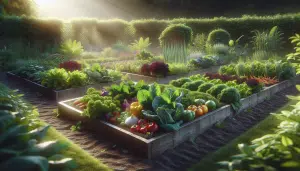Simple Ways You Can Create a Low Maintenance Garden
Lily Carter October 21, 2025
Curious about how to enjoy a vibrant garden without endless chores? This guide reveals easy, low maintenance garden strategies using drought tolerant plants, mulching, landscape fabric, and water-wise design so anyone can create a beautiful outdoor space that stays lush with minimal effort.
Understanding Low Maintenance Gardening
Low maintenance gardening is a concept growing in popularity among homeowners looking for attractive outdoor spaces that require less daily attention. Instead of spending weekends pulling weeds or constantly watering flower beds, more people are turning to techniques that reduce annual labor. At the center of this approach are smarter plant choices, strategic soil coverage, and efficient irrigation. Many who seek low maintenance solutions are drawn to drought tolerant plants, mulch systems, and landscape fabric, all of which support a thriving garden that needs little intervention. This creates a space that is welcoming but not overwhelming to manage.
Creating a garden that essentially looks after itself may sound ambitious, but modern methods make it surprisingly achievable. By selecting plants that naturally thrive in the local climate, one can minimize watering and pruning. Likewise, using mulches, groundcovers, or rock beds helps suppress weeds, preventing them from taking over flower beds or vegetable patches. It’s possible to find satisfaction in gardening even if you only have a few minutes a week to dedicate to upkeep. Less time spent on maintenance means more time to enjoy your garden’s beauty and relaxation it provides.
What truly defines low maintenance gardening is the thoughtful planning that goes into design. Sustainable choices, like perennial borders or slow-growing shrubs, form the backbone of a successful garden requiring minimal trimming or replanting. Efficient use of water, such as with drip irrigation or rain barrels, further reduces chores and supports environmental stewardship. By following the principles of low maintenance gardening, both newcomers and seasoned green thumbs can create a lush environment that does not require constant vigilance.
Selecting Drought Tolerant Plants for Your Landscape
Drought tolerant plants have become essential in contemporary low maintenance garden design, especially with increasing awareness of water conservation. Choosing native species or those known for their resilience in dry conditions supports a landscape that continues looking lush and green even during dry spells. These plants, which include ornamental grasses, sedums, lavender, and certain sages, hold moisture efficiently and need little supplemental watering once established. This reduces stress caused by unpredictable weather, making them a favorite option for sustainable gardens.
Selecting the right mix involves understanding the growing conditions of your space—sun exposure, soil type, and local weather patterns. Many drought tolerant plants also provide added visual interest thanks to unique textures and seasonal colors. In addition to traditional perennials, succulents such as hens and chicks or agave offer striking structure with minimal fuss. Having a garden filled with low water plants not only eases your workload but can yield significant savings on water bills over time.
By integrating these plant choices with other low maintenance strategies, gardens can be both resilient and beautiful. Consider grouping plants by water needs and sun requirements. This simple zoning technique allows each section of your garden to thrive with as little extra help as possible. Explore what grows best in your area by consulting local extension offices or botanical gardens and prioritizing those varieties. Adding drought resistant ornamentals isn’t just about convenience—it’s a step toward more sustainable, water smart landscaping. https://extension.psu.edu/ground-covers-for-lawn-replacement
Effective Mulching and Landscape Fabric Techniques
Mulching is a tried and true method for reducing weed growth, conserving soil moisture, and improving the health of your garden. It acts as a protective blanket for your flower beds, suppressing unwanted plants and insulating roots from temperature extremes. Both organic options, like bark chips, wood mulch, or straw, and inorganic options, such as stone or rubber mulch, limit evaporation and encourage robust plant growth with less watering.
Landscape fabric offers another layer of protection in persistent weed-prone areas or under hardscape installations. When installed correctly beneath mulch or gravel, this barrier blocks sunlight from reaching weed seeds without impeding water flow. It is especially useful in borders, midsize shrub plantings, and tree rings. For the best result and garden longevity, select fabric that is both durable and permeable, allowing roots to breathe while thwarting aggressive weeds.
Combining mulching and landscape fabric can create an almost maintenance-free surface. These barriers minimize the need for herbicides and reduce time spent hand-pulling weeds or watering exposed soil. However, both materials need occasional replenishing or adjustment to continue functioning optimally. Education about laying fabric and choosing the right mulch depth ensures that your yard remains vibrant, healthy, and easy to maintain year-round. https://edis.ifas.ufl.edu/publication/MG251
Designing a Water-Wise Garden
Water-wise, or xeriscape, garden design focuses on limiting irrigation demands through plant selection, efficient watering, and smart zoning. Becoming familiar with water-wise principles allows anyone to cultivate a garden that looks stunning but sips water sparingly. Key techniques include groupings of plants with similar water requirements and the use of drip irrigation, rain sensor technologies, or self-watering planters.
Implementing a water-wise approach can begin with a simple soil assessment. Amending heavy clay or sandy soils with compost improves retention and drainage, supporting the resilience of your chosen plants. Additionally, maximizing shade with shrubs, trees, or pergolas can lower evaporation and create comfortable sitting areas. All these choices promote sustainability without sacrificing style or color.
Even small spaces benefit from water-wise design. Raised beds built with water-efficient methods maintain healthy roots with less effort. Rain barrels or soaker hoses divert and capture rainwater, providing a free resource for irrigation during drier periods. Water-smart gardening practices ultimately result in reduced bills, decreased environmental footprint, and a lush landscape that speaks to both practicality and beauty. https://watewisegardener.org/principles-of-xeriscaping/
Smart Lawn Alternatives for Less Work
Replacing sections of turf grass with smart alternatives can dramatically cut back on maintenance. Lawns typically demand the most watering, mowing, and fertilizing out of any garden element. Substituting areas with slow-growing groundcovers, gravel gardens, moss, or artificial turf lightens your workload and minimizes water use while supporting a neat, tidy appearance throughout the year.
Groundcovers such as clover, creeping thyme, or corsican mint provide green coverage without the intensive care of traditional lawn. These plants often require less mowing, thrive with minimal watering, and can withstand light foot traffic. Installing stone pathways or patio pavers further reduces the lawn area and adds functionality and charm to your landscape design. The result is more outdoor living space with none of the weekend chores that usually accompany grass.
Consider your goals: Are you seeking to create children’s play spaces, garden beds, or pet-friendly corners? Lawn alternatives can be tailored to your needs and installed in stages. Many families enjoy experimenting with living mulch or pollinator-friendly groundcovers that support bees and butterflies while remaining easy to maintain. Learn more about eco-friendly, low maintenance alternatives to keep your outdoor space looking fresh and inviting. https://hgic.clemson.edu/factsheet/lawn-alternatives/
Best Tools and Seasonal Tasks to Simplify Garden Care
Having the right tools and understanding seasonal garden chores makes maintaining a low effort garden even easier. Essential tools such as ergonomic trowels, long-handled pruners, and lightweight hoses save time and protect your back. Many gardeners also benefit from using self-sharpening shears or automatic irrigation timers to shave off precious minutes from their routines. Investing in quality equipment means less frustration and smoother workflows, no matter the time of year.
Adopting a task calendar or garden diary helps track when and what to do, from mulching to pruning to deadheading. Spring and fall typically require the most effort, but with a low maintenance setup, these chore lists are shorter and less frequent. Periodic checks for weeds or pests and light soil amendment usually suffice to keep plants healthy and thriving throughout the seasons.
Seasonal maintenance often becomes intuitive with practice. Take time each week for short garden walks to notice any trouble spots or new growth. Regular observation keeps overwhelming chores at bay while fostering a deeper connection with your garden. Even the simplest adjustments—like resetting timers, topping off mulch, or cleaning tools—ensure everything continues functioning smoothly and your garden remains a peaceful retreat. https://www.gardendesign.com/how-to/low-maintenance.html
References
1. Pennsylvania State University Extension. (n.d.). Ground Covers for Lawn Replacement. Retrieved from https://extension.psu.edu/ground-covers-for-lawn-replacement
2. University of Florida IFAS Extension. (2020). Mulches for the Landscape. Retrieved from https://edis.ifas.ufl.edu/publication/MG251
3. Water Wise Gardener. (n.d.). Principles of Xeriscaping. Retrieved from https://watewisegardener.org/principles-of-xeriscaping/
4. Clemson Cooperative Extension. (2022). Lawn Alternatives. Retrieved from https://hgic.clemson.edu/factsheet/lawn-alternatives/
5. University of California Statewide Integrated Pest Management Program. (n.d.). Mulch. Retrieved from https://ipm.ucanr.edu/PMG/PESTNOTES/pn7441.html
6. Garden Design. (n.d.). Low-Maintenance Garden Tips. Retrieved from https://www.gardendesign.com/how-to/low-maintenance.html







